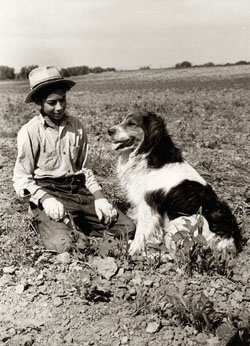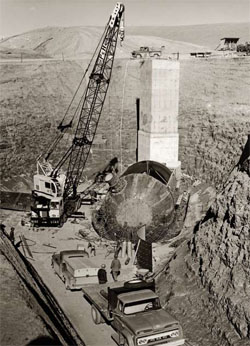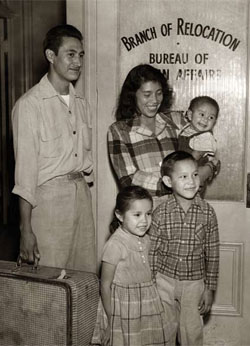Montana: Stories of the Land
Companion Website and Online Teacher's Guide
Chapter 20 - Building a New Montana, 1945-1965
Chapter 1 - Montana: Where the Land Writes History
Chapter 2 - People of the Dog Days
Chapter 3 - From Dog Days to Horse Warriors
Chapter 4 - Newcomers Explore the Region
Chapter 5 - Beaver, Bison, and Black Robes
Chapter 6 - Montana's Gold and Silver Boom
Chapter 7 - Two Worlds Collide
Chapter 8 - Livestock and the Open Range
Chapter 9 - Railroads Link Montana to the Nation
Chapter 10 - Politics and the Copper Kings
Chapter 11 - The Early Reservation Years
Chapter 12 - Logging in the "High Lonesome"
Chapter 13 - Homesteading This Dry Land
Chapter 14 - Towns Have Lives, Too
Chapter 15 - Progressive Montana
Chapter 16 - Montana and World War I
Chapter 17 - Montanans on the Move
Chapter 18 - The Great Depression Transforms Montana
Chapter 19 - World War II in Montana
Chapter 20 - Building a New Montana
Chapter 21 - A People's Constitution
Chapter 22 - Living in a New Montana
Educator Resources
Takeaways
-
Inspired by reading specialist Tammy Elser, who was in turn inspired by SKC graduate Taylor Crawford, we've created a "Takeaway" bookmark for every chapter of Montana: Stories of the Land. Before starting a chapter, print and cut out these bookmarks and distribute them to your students. Ask them to use the Takeaway to summarize the GIST of what they learn from reading assigned sections of the chapter. Remind them that they don't have much room, so they'll need to think before they write down the most important idea they want to take away from the section. Learn a little more about the GIST strategy.
-
Even though we've created Takeaways for every chapter, we don't recommend you have your students complete a Takeaway for every section of every chapter they read. That would be exceedingly tedious. However, used appropriately, they can be a useful tool for encouraging reflection and teaching students how to summarize information.
Websites and Online Lesson Plans
-
Information is available online about the Hungry Horse Dam and power plant, the Yellowtail Dam, and the Libby Dam.
-
Pitwatch.org provides detailed information on the Berkeley Pit.
-
"Creating a New Community in the North: Mexican Americans of the Yellowstone Valley," by Laurie Mercier (in Stories from an Open Country: Essays on the Yellowstone River Valley, University of Washington Press, 1995) is the best source for more information on Mexican Americans in Montana.
-
The Montana Historical Society has been busy digitizing newspapers, including for the postwar era. Titles include The Char-Koosta News, the newspaper of the Confederated Salish and Kootenai Tribes, 1956-1961 and 1971-1988, and the Eyapi Oaye (1963-66), published by the Fort Peck Tribal Executive Board. Use this online resource to research tribal views on issues of the period or to find reporting on local issues from Baker to Thompson Falls.
-
Mining Childhood, Growing Up in Butte, Montana, 1900-1960 Classroom Resources offers lesson plans and excerpts of the book Mining Childhood: Growing Up in Butte, Montana, 1900-1960 (Lexile Level 1120L). Published by the Montana Historical Society Press, the book provides a child’s eye view of “the Richest Hill on Earth".
-
The National Archives' Teaching with Primary Documents project also includes several lessons relevant to the Cold War and the conflicts in Korea and Vietnam:
-
The Daily Yonder published the article "Indian Relocation: Sending Roots under Pavement," about the Indian community in Chicago and their experience with the federal Relocation program.
Videos or DVDs
-
Chapter 5, "Ethnic Migration," (20 minutes), Chapter 6, "Federal Indian Policy" (19 minutes), and Chapter 7, "Montana's Resource Driven Economy" (17 minutes), from Montana Mosaic: 20th Century People and Events. (Site includes links to both User Guides with discussion questions and videos.)
Possible Field Trips: View the Map
-
Berkeley Pit, Butte
-
Libby Dam, Libby
-
Yellowtail Dam Visitor Center, Fort Smith
Chapter 20 Test and Answer Keys Page
The tests and answer keys are password protected.
You can contact us to receive the password:
- Martha Kohl - call (406) 444-4790 or email mkohl@mt.gov
- Melissa Hibbard - call (406) 444-4741 or email Melissa.Hibbard@mt.gov
Or, if you used the old system, the original username is now the new password. You will be asked for this case-sensitive password every time you open a new document.
Alignment to ELA Common Core Standards
Alignment to Content Standards and Essential Understandings Regarding Montana Indians (EU)



